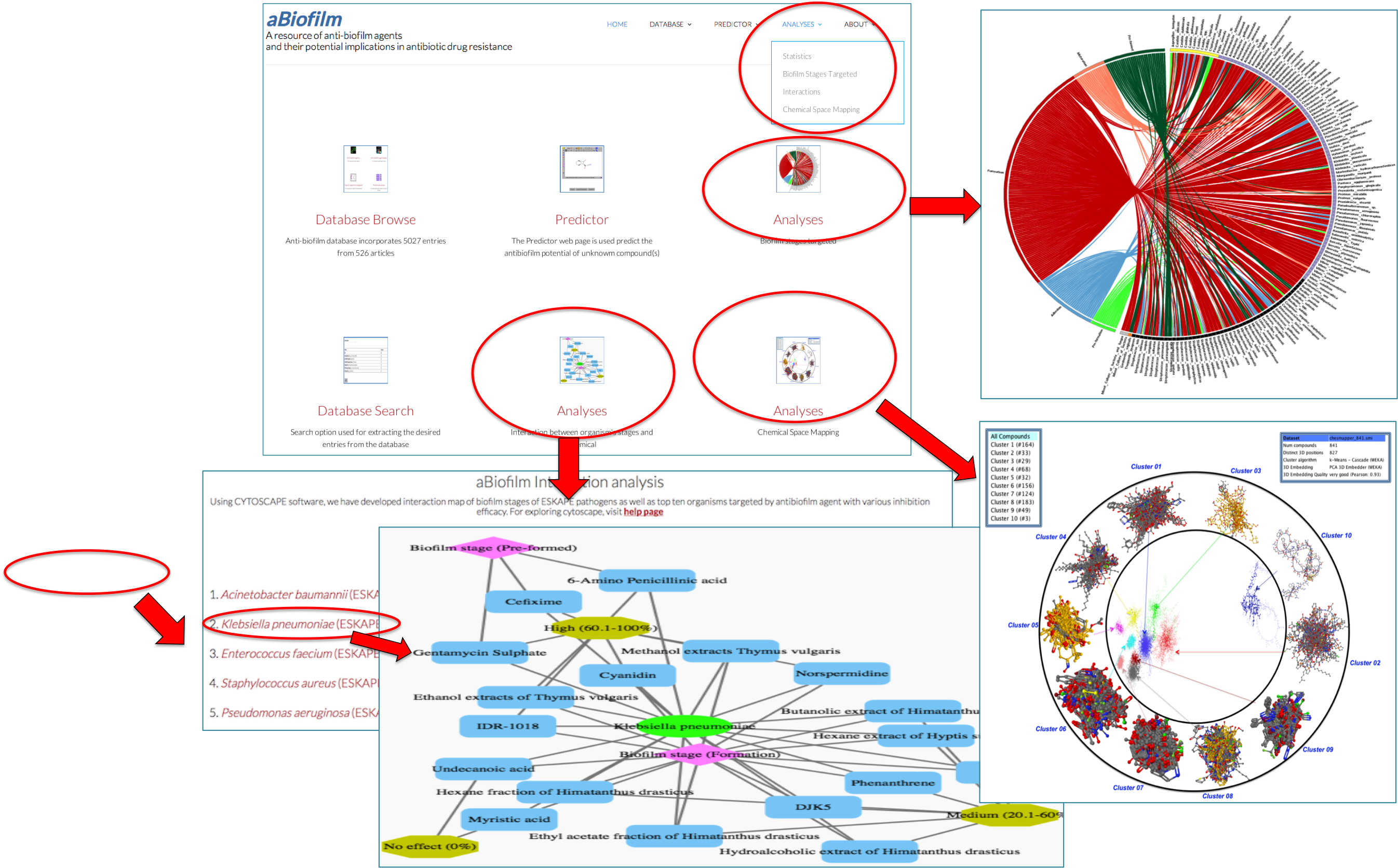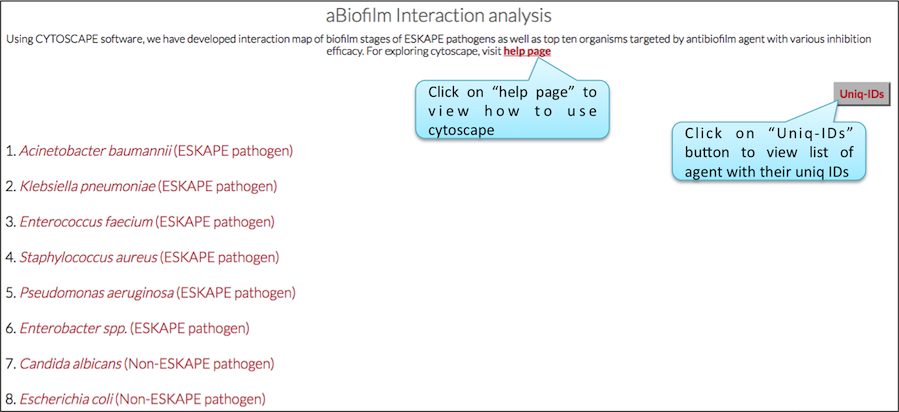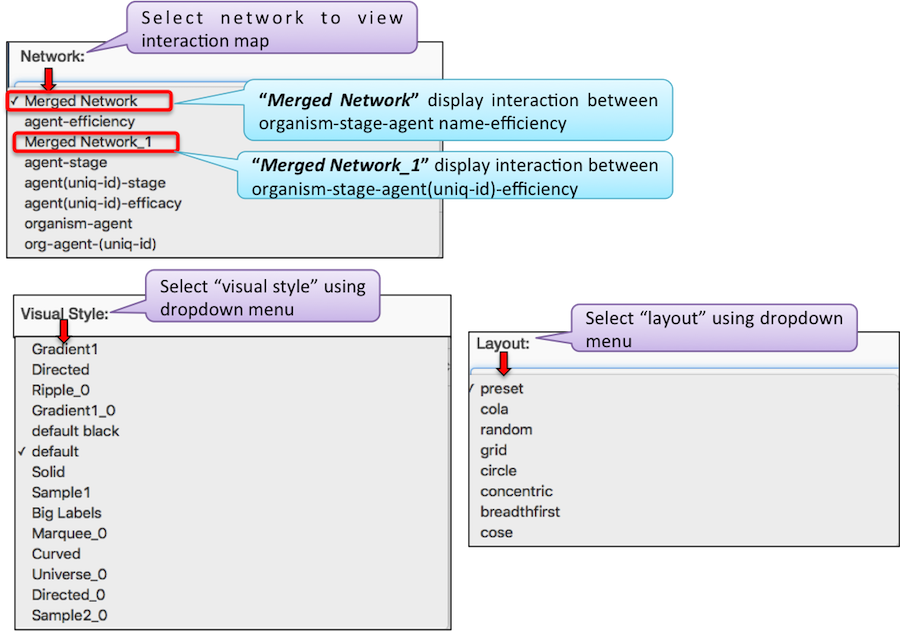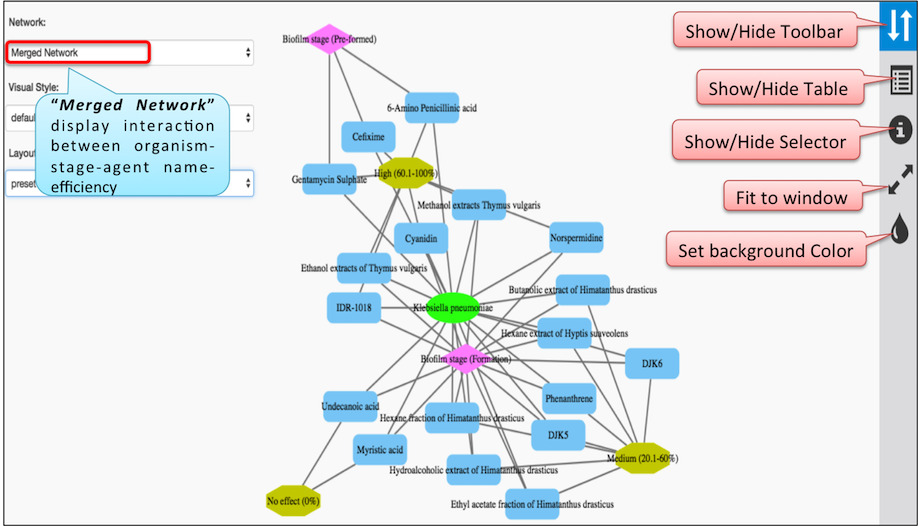aBiofilm Help Page
aBiofilm Database Browse
aBiofilm browse option is available to explore the entries of database with six different modes.i.e. anti-biofilm ID, anti-biofilm agent , anti-biofilm agent type, targeted organisms, preliminary assays used to identify inhibition efficiency of anti-biofiom agents, and PubMed IDs, which contain biofilm targeting anti-biofilm agents were validated. The chemical, structural, and biological information is provided for each entry followed by hyperlinks of few fields with external databases like NCBI taxonomy, PubChem, Chemspider, and PubMed. The detailed overview of aBiofilm browse is provided in figure below.

aBiofilm Database Search
aBiofilm search option is available to fetch the desired entries from the database from six different fields .i.e. anti-biofilm agents, anti-biofilm agent types, targeted organisms, types of targeted organism, preliminary assays used to identify inhibition efficiency of anti-biofiom agents, and journals containing articles, which contain biofilm targeting anti-biofilm agents were validated. The chemical, structural, and biological information is provided for each entry followed by hyperlinks of few fields with external databases like NCBI taxonomy, PubChem, Chemspider, and PubMed. The detailed overview of aBiofilm browse is provided in figure below.

aBiofilm Predictor
aBiofilm Predictor is employed to identify the biofilm inhibition effeciency of the unknown compound(s). It is developed using Quantitative structure activity relationship (QSAR) based models on qualitative data, which is able to predict the anti-biofilm potential with accuracy of 80.00%. The user can check the effeciency of compounds by putting SMILES in fasta/multifasta format. The user can generate the SMILES from any freely avaliable chamical repositories like PubChem or Chemspider. The output is displayed in form of tables comprised of information of chemicals, predicted categories i.e. high, medium, and low. The input and output of the aBiofilm predictor is described in figure provided below.

aBiofilm Analyses
aBiofilm analyses option is provided to the users to utilize our resource. It summarizes the important fields of the database to fetch out important information, which will be benefecial to the researchers working in the field to develop varios anti-biofilm inhibitors. We used various softwares like CIRCOS, CYTOSCAPE, and Chesmapper to depict and explain our data. By aBiofilm analyses the user can information about the chemical diversity of the compounds available in the database along with the details of the agents utilized/experminatally validated to target specific stages of the organism. All the three analayses is explained in figures below.

Cytoscape
Cytoscape is used to show interaction between organism, quorum-quenching agent, biofilm stage and efficacy. We have developed two types of interaction map viz., Merged Network and Merged Network_1. "Merged Network" display interaction between organism, quorum-quenching agent, biofilm stage and efficacy. We have also provided uniq-ID to 1720 uniq agents and it can be viewed by clicking on "Uniq-IDs" button given on cytoscape homepage. Using this uniq-ID, we have developed "Merged Network_1" map.

List of network, visual style and layout in cytoscape

Merged Network

Merged Network_1
